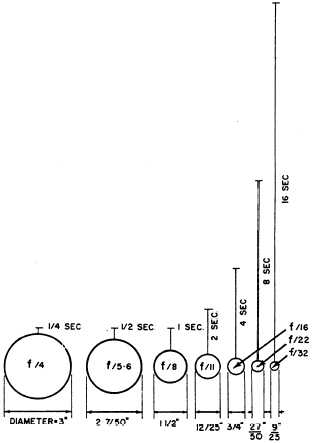measure incident light; some measure reflected light.
Another line of light meters measure light only within
the sensitivity range of the human eye.
However, for news photography and most other
requirements of a Navy journalist, the built-in light
meter described earlier in this chapter should more than
satisfy your needs. This battery-powered meter, which
measures reflected light, works automatically (unless
you use the manual setting) to give you the correct
exposure. When used manually, the built-in meter
functions the same as a comparable hand-held meter and
allows you to make whatever adjustments you prefer to
achieve stylized or creative photographs. Except in
cases involving special motion-picture film lighting and
portrait studio work, the hand-held exposure meter has
virtually been replaced by the built-in camera meter.
Before using any exposure meter, read the
instruction book that comes with it to make sure that you
use it correctly. The readings from an exposure meter,
and the accuracy of the meter itself, are wholly
dependent on the method used.
CAMERA SETTINGS
When the photographer knows the sensitivity of the
film and the amount of light available, the user
determines the settings on the camera that will give the
film a correct exposure. The settings are the f/stops and
the shutter speed. Together, they control the total amount
of light allowed through the camera to form the latent
image on the film.
F/stops can range from f/1.4 (most amount of light)
to f/22 (least amount of light). The f/stop system
(factorial system) is always read as a whole number, not
as a fraction or ratio.
Full stops in the English system of f/stops are as
follows: 1.0, 1.4, 2.0, 2.8, 4.0, 5.6, 8, 11, 16, 22, 32, 45,
64, 90, and so on. Notice that the number doubles for
each two-stop decrease in size. Slight optical confections
are made for f/11 and f/45. This may seem confusing at
first, but knowledge of the f/stop system is necessary to
compute optical formulas used by advanced
photographers. It is necessary to know that each marked
f/stop on a lens, except its widest aperture, is usually a
full stop — that is, it admits one-half or twice the amount
of light as the adjacent stop, and the larger the number,
the smaller the aperture. At first, it is perhaps easier to
think of the f/stops in terms of fractions; 1/8 is larger
than 1/11 which is, in turn, larger than 1/16.
Lens apertures can be set between marked f/stops.
You could match information on the exposure
calculation dial of an exposure meter. For example, if
the light meter suggests an exposure of 1/125" at f/9.5,
Figure 11-20.—Comparison between aperture, f/stop and
relative exposure.
you could set the camera at 1/125" at f/8, allowing the
film latitude to cover the difference, or at 1/125" with
the lens aperture midway between V8 and f/l1, which
would be more accurate (fig. 11-20).
Shutter speeds control the duration of time that light
is allowed to pass through the lens aperture to the film.
Shutter speeds are usually marked on the camera as the
reciprocal of the fraction of a second that the shutter
remains “open” (one is 1/1 or one second, two is 1/2 or
one-half second, four is 1/4 or one-quarter second, and
soon).
Standard shutter speeds are l", 1/2", 1/4", 1/8",
1/15", 1/30", 1/60", 1/125", 1/250", 1/500", 1/1000" and
1/2000".
f/Stop-Shutter Speed Combinations
With today’s cameras offering you the opportunity
to use automatic settings, you could just concern
yourself with the f/stops of the camera and let the
automatic shutter speed controls of the camera do the
rest. However, should you choose to work with your
11-23

